Knowing the type of battery your semitruck uses is essential, especially if the battery becomes faulty or you must get a replacement. But then, you may have seen some semitrucks with 12-volt batteries and others with 24-volt batteries.
The variation may have you wondering, “Are semitrucks 12v or 24v?”
In the past, semitrucks came with 12v and 24v combinations. However, in recent times, semitrucks in the US are mostly 12v. This does not mean there are no 24v semitrucks, however. It means you are more likely to come across 12v semitrucks than 24v semitrucks in the US.
If you want to understand the battery system of your semitruck better, we’ve got you.
Below, we discuss how to know if your semitruck uses 12v or 24v, how many volts your semitruck needs, and much more. Read on for the details.
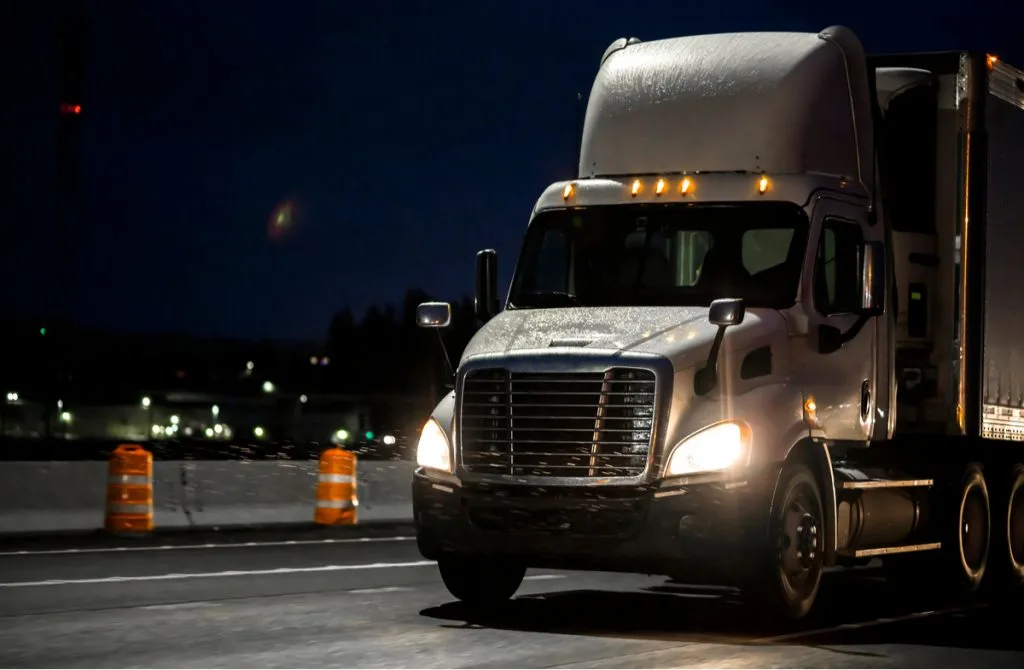
Are Semitrucks 12v or 24v?
Semitrucks can be 12v or 24v. However, these days, American semitrucks are more commonly 12v.
In the past, trucks were a 12- and 24-volt combo connected through a series or parallel solenoid. The 24v battery provided the starting voltage, while the 12v battery provided lighting for the rest of the system.
Instead of relying on a 24v battery for starting, semitrucks may come with multiple 12v batteries (around 1 to 4 pieces) connected in parallel.
Since the batteries are in parallel, their output voltage remains the same. However, their current is high enough for starting.
These days, you may still find some international trucks (such as European trucks) using the 12v-24v combination. You may also find others using multiple 12v batteries connected in parallel.
All in all, semitrucks can have a 12v battery system or a 24v battery system.
How Do I Know if My Truck Is 12v or 24v?
Check the Label or Tag
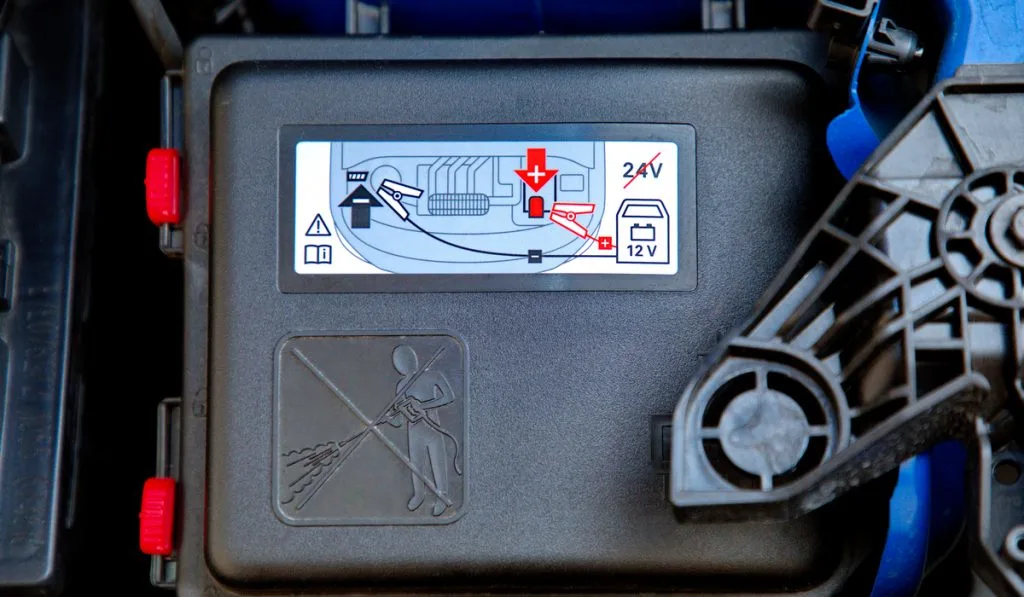
The easiest way to know the voltage of your truck’s battery is to check the tag on the battery. Your vehicle’s battery voltage will be clearly stated on the label more often than not.
However, sometimes, you may not see the voltage rating of your battery on the label.
This may be because the tag details are no longer visible, the tag has peeled off the battery, or it doesn’t have the voltage rating.
For whatever reason, if you do not get the voltage rating from the battery tag, you can try the following:
Read or Watch the User Manual

Another simple way to know if your truck is 12v or 24v is to read or watch the user manual. We used the word “watch” here because some user manuals now come as DVDs or online links.
You may not have a user manual for a truck you did not get new. But a quick internet search might help you get the user manual for your vehicle’s make and model.
But if that does not work, move on to the next option.
The Physical Size of the Battery
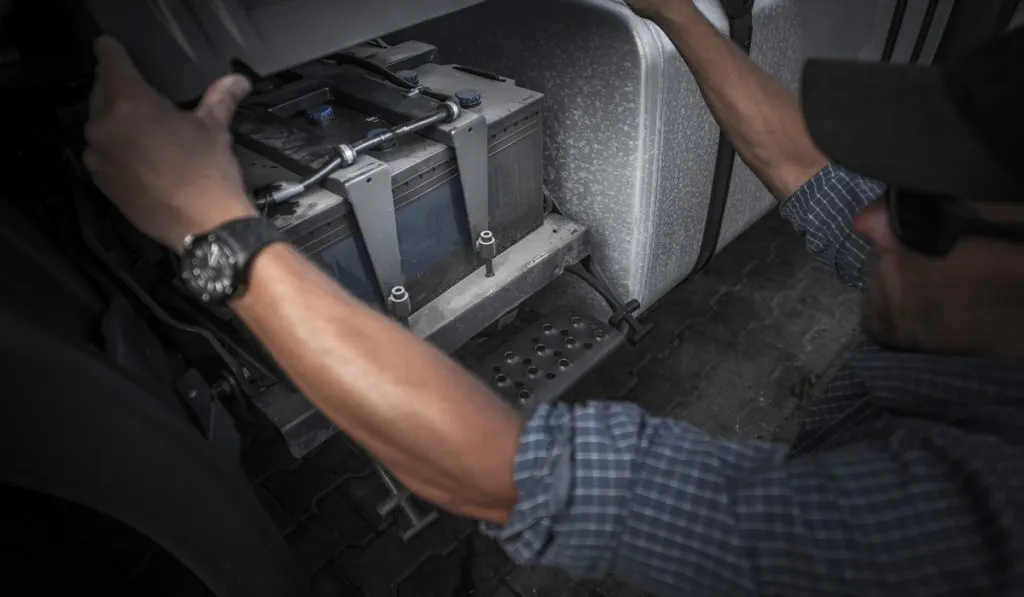
You may also tell the type of battery your truck uses by checking its physical size.
A 24v battery is usually significantly bigger than a 12v battery. So, if you know what either of those batteries looks like, you might be able to tell what type of battery you have in your truck.
If you are unsure of the sizes of a 12v and a 24v battery, you can try the next option.
Use a Voltmeter or Multimeter
Besides the battery tag, you can reliably verify your battery’s voltage using a voltmeter or multimeter.
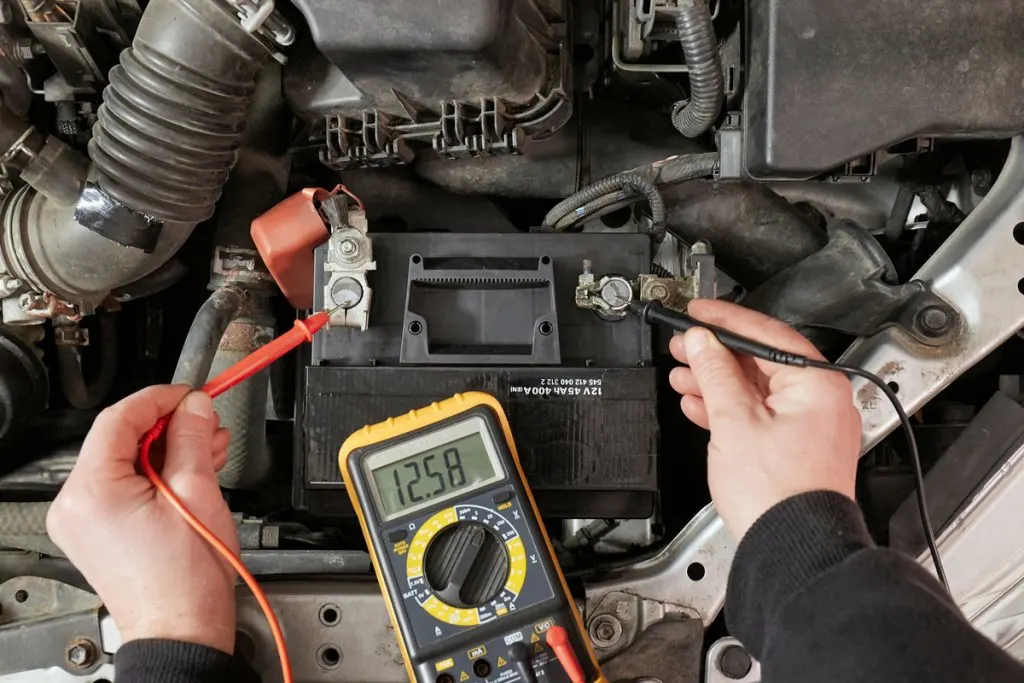
If you are using a voltmeter, do the following:
- Open your truck’s hood.
- Connect the red probe of the voltmeter to the positive battery terminal.
- Connect the black voltmeter probe to the negative terminal.
- Then read the voltmeter for the output voltage.
If you are using a multimeter, the process is pretty much the same, except you set the dial to “DC voltage” before connecting the probes to the battery terminals.
If your truck’s battery is 12 volts, its output voltage reading would be between 10.5 and 13.6 volts. You would only get a reading as low as 10.5 volts from a discharged battery.
As long as the battery still carries some charge, the voltmeter or multimeter reading should be around 12 volts at the least.
On the flip side, if your battery is 24 volts, its output voltage reading would be around 23 to 28.7 volts.
If your voltmeter or multimeter reads 0 volts, the battery may have experienced a short circuit. It would be best if you fixed this as soon as you can.
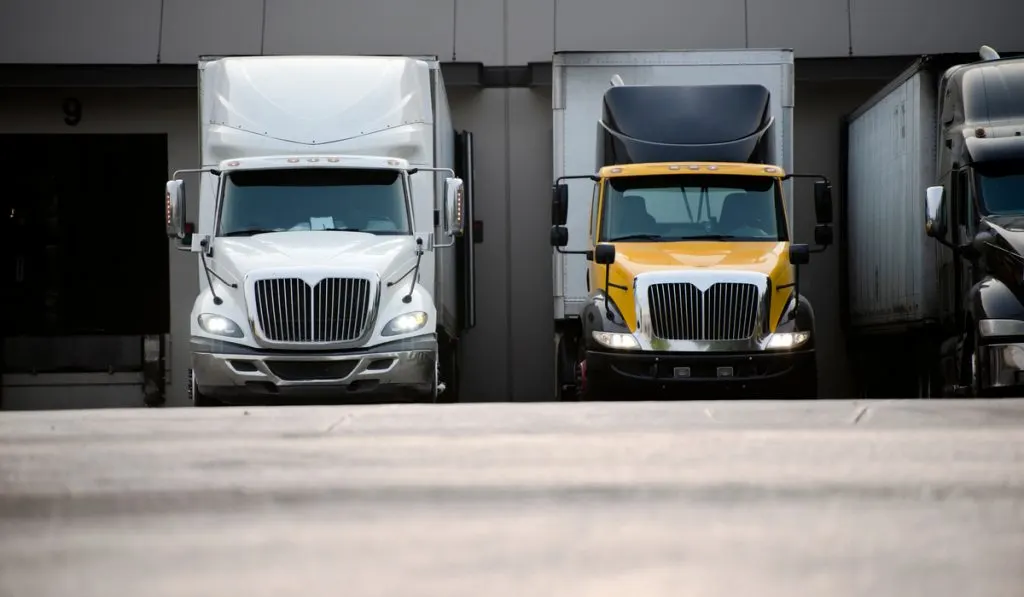
How Many Volts Does My Truck Need to Start?
The minimum battery voltage needed to start a 12v truck is around 12.6 to 12.8 volts. But when starting the vehicle, the voltage of batteries in top condition may rise as high as 13.7 volts to 14.7 volts.
The battery voltage needed to start a 12v truck should not exceed 14.8 volts. If it goes beyond this level, the battery may suffer damage.
One easy way to tell that the battery voltage is enough to start the vehicle is the brightness of the inner light system.
Basically, if your headlights or cab lights are sufficiently bright, the battery should start the truck.
In some cases, the lights may be bright, but the battery discharges too quickly to start the vehicle. As a result, you’d have to probe further or get the truck to an auto repair shop in such cases.
If you intend to probe further, get your voltmeter or multimeter out and check the battery’s output voltage.
The battery is low if the voltage is around 11.8 to 12.7 volts. But you might be able to start the truck by switching off other electrical appliances.
However, the vehicle is unlikely to start if the battery is below 11.8 volts. But you might be able to jumpstart the truck.
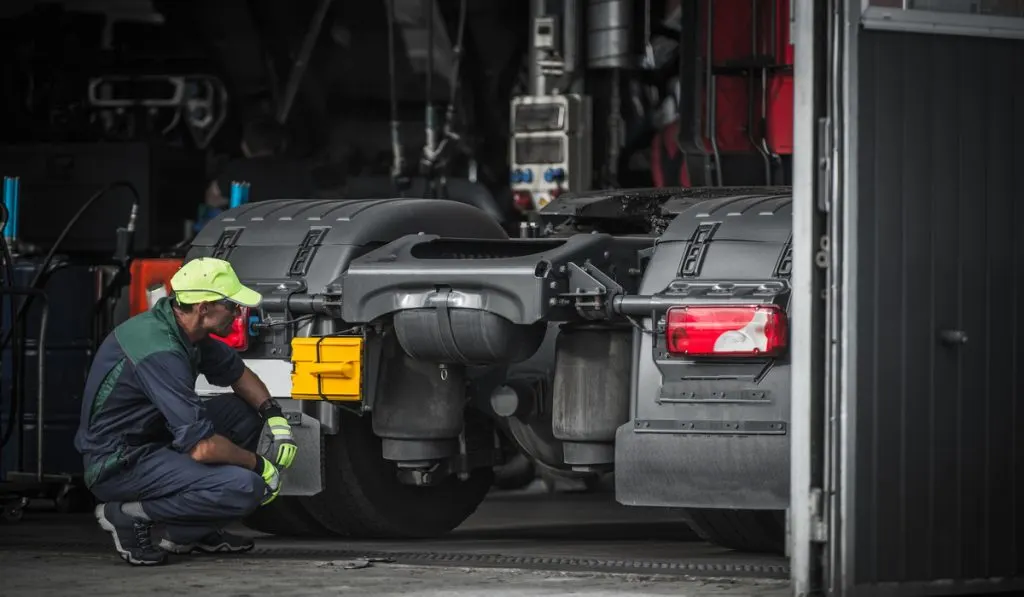
How Many Amps Do I Need to Start My Truck?
Battery voltage is not all that contributes to your truck’s battery starting power. The battery’s amperage is also vital.
Generally, you only need around 400 amps to 600 amps to start your truck. However, you may need higher amps when the weather is cold to start your vehicle.
This is why batteries typically come with a cold cranking amps (CCA) rating. The higher the CCA rating of a battery, the greater its starting power in cold conditions.
When getting a jump starter for your truck, the amps and voltage rating of the jump starter is vital to your selection.
Here’s why:
- A jump starter with high amps can jumpstart a truck that needs lower amps. On the contrary, a jump starter with low amps cannot jumpstart a vehicle that needs high amps. In other words, you can use a 500-amp jump starter on a truck that needs 300 amps to start. But you cannot use a 300-amp jump starter on a vehicle that needs 500 amps to start.
- You should not connect a jump starter with a high voltage rating to a battery with a lower voltage rating. Doing so may cause sparks, a short, and a possible explosion. In other words, do not try to connect a 24v jump starter to a 12v battery or a 12v jump starter to a 6v battery.

Is a 24v System Better Than a 12v System?
A 24v battery system is not necessarily better than a 12v battery system. But it does have some advantages over a 12v system.
With a 24v system, your battery can generate the same starting power with half the current. For this reason, you can use thinner, cheaper wires with a 24v system.
Since the wires are thinner, 24v systems experience lower amperage losses than 12v systems.
On the flip side, 12v batteries are less expensive than 24v batteries. They also take up less space.
Final Thoughts
Semitrucks can be either 12v or 24v. However, they are more commonly 12v. If you are unsure of your truck’s battery system, you can check the battery tag or read the manual. You can also verify the battery’s voltage with a voltmeter or multimeter.
Resources
- https://www.quora.com/Are-semi-trucks-12V-or-24V
- https://answerstoall.com/science/do-semi-trucks-use-12v-or-24v/
- https://www.quora.com/How-do-I-know-if-my-car-is-DC-12V-or-24V
- https://answerstoall.com/science/how-do-i-know-if-my-truck-is-12-or-24-volt/
- https://driving.ca/column/how-it-works/how-it-works-owners-manuals
- https://www.rebel-cell.com/knowledge-base/the-discharge-and-capacity-of-batteries/
- https://www.autobatteries.com/en-us/how-car-batteries-work/how-a-battery-starts-your-car
- https://www.batterystuff.com/blog/how-to-tell-if-your-battery-is-bad.html
- https://pveducation.com/solar-concepts/battery-state-of-charge-vs-open-circuit-battery-voltage/
- https://www.altenergymag.com/article/2003/04/battery-maintenance/260/
- https://reviewerst.com/jump-starters/what-is-the-minimum-voltage-needed-to-start-a-car
- https://www.quora.com/How-many-volts-does-a-battery-need-to-start-a-car
- https://www.xenonpro.com/peak-amps-vs-cranking-amps-vs-cold-cranking-amps-jump-starters
- https://carfromjapan.com/article/car-maintenance/how-many-amps-to-start-a-car/
- https://www.autobatteries.com/en-us/how-to-choose-your-car-battery-replacement/battery-cold-cranking-amps-cca
- https://carstopics.com/jump-start-a-6-volt-battery/
- https://www.quora.com/What-is-the-advantage-of-having-a-24-volt-system-compared-to-a-12-volt-system-in-a-car-or-truck
- https://battlebornbatteries.com/12v-vs-24v/
